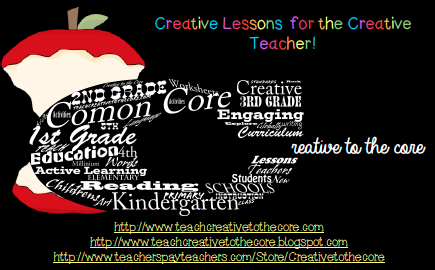Hey Guys! This is my second week back to school and I am excited to share my new approach to staff training this year. I tend to fall into the "we have no training time" trap and the extravagant plans I have for staff training fall to pieces as we scramble to put out fires in the little amount of time we do have set aside for meetings. This year, I am trying a new plan and I am VERY hopeful about it!
1
The first thing I did was set up a Staff Information Station on a whiteboard near staff cubbies. There I have posted inspirational quotes, schedules, calendars & staff reminders for classroom expectations & strategies (download my Staff Strategies Cheat Sheets here).
 |
| This is what my Staff Information Station looked like during initial set up (It is now VERY full of information!). |
The next step in my plan is doing weekly theme based trainings for staff. Every Monday (or preferably Friday afternoon's before leaving!) I set up our This Week in 206 board in order to let staff know in advance what our weekly goal is, the reason why it is important, a few quick tips or reminders for getting started with implementation and an inspirational quote or statement related to the theme. I will be posting our Weekly Themes each week in hopes that it is beneficial for your classes (and that it motivates me to keep at it!)
This week we are focusing on Fading Prompts from our classroom routines. Many of our routines are similar to last year's (and the year before!) Have we added new activities? Yes! However, overall things follow a similar format and there are visual supports in place for students to help them learn new/modified routines. Our first week back involved a LOT of prompting. Now that we are seeing some student initiation and success it is time to start systematically fading out our supports so that our students do not become dependent on them. Leaving prompts in place when they are no longer needed can create confusion for the student (Is the staff "prompt" actually a part of the task? Is it the new cue to perform the task? Can I do it on my own? Do I need permission to perform this skill?) and often leads to prompt dependence (in my experience).
Many of our classroom routines are taught as chains (a series of tasks, steps or skills which are linked together to perform the larger task). One common classroom routine which is taught as a chain is the Arrival Routine. This routine may include MANY steps - think... walk to classroom, greet teachers, greet peers, unpack backpack, put lunchbox away, put communication book away, put coat and backpack in cubby (or locker), write schedule, etc. When teaching chains, I often include some type of support which will remain in place after staff prompts have been eliminated and I typically use the Graduated Guidance prompting technique to use only as much prompting as needed. Graduated guidance is a prompting strategy used in Applied Behavior Analysis where staff prompting is increased and decreased immediately based upon moment to moment student performance. I often look at the data from the previous opportunity to see which steps the student seems to already understand as well as which ones he/she needs the most help with. This allows me to anticipate when I may need to move in with a prompt and when I can allow the student to attempt independence. This way I am making data based decisions to guide my prompting and ONLY PROMPTING WHEN NEEDED.
So, this is our goal for the week - removing staff prompting as much as possible (only prompting when & how much the student needs) while still closely monitoring and tracking progress and, of course, providing lots of positive reinforcement for independence and student initiation.
I have said this so many times to my staff in the past and I think it is worthwhile to pass along to you as well: Our ultimate job is to ensure that our students do not need us to be here anymore! Independence is the most important achievement a student can make. Can we leave certain supports in place and have the student still be considered independent and successful? Yes! A visual schedule is a support the student can access without another person present. Hand over hand guidance or step by step verbal prompts (which are my biggest pet peeve and a whole other post for another day!) are socially mediated and so someone must be with the student, which does not allow for independence.
Trust yourselves and your students, monitor for readiness, mentally prepare yourselves and your staff for what it feels like to take a step back & let your students shine!
Have a great week everyone :)
~Kristine








